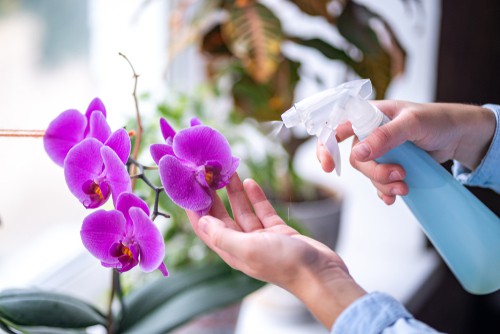Orchids are a beautiful and delicate addition to any home or garden. However, they require a significant amount of care and attention to thrive. One common issue that orchid owners may face is the appearance of white spots on their leaves.
White spots on orchid leaves can indicate a variety of issues, including fungal or bacterial infections, pests, or environmental stress. Identifying the specific cause of the white spots is crucial to effectively treating the issue and preventing it from recurring.
Understanding the underlying causes of white spots on orchid leaves is essential for maintaining the health and beauty of these plants. By taking preventative measures, such as proper watering and fertilization, orchid owners can help ensure that their plants remain free from white spots and other common issues.
In the following sections, we will explore the causes and treatments for white spots on orchid leaves, as well as tips for maintaining healthy orchids.
Key Takeaways on Orchid Leaves White Spots
- White spots on orchid leaves can indicate a variety of issues, including fungal or bacterial infections, pests, or environmental stress.
- Identifying the specific cause of the white spots is crucial to effectively treating the issue and preventing it from recurring.
- By taking preventative measures, such as proper watering and fertilization, orchid owners can help ensure that their plants remain free from white spots and other common issues.
Check out these other posts:
- Why Does My Aloe Plant Have White Spots?
- Why Do My Plants Have White Spots on the Leaves?
- What Causes White Spots on Tomato Leaves:
Understanding White Spots on Orchid Leaves

White spots on orchid leaves can be a sign of an underlying issue that needs to be addressed. In this section, we will discuss the appearance, color, shape, development, and progression of white spots on orchid leaves.
Appearance and Size
White spots on orchid leaves can vary in size and shape. They can be oval or round and can range from small dots to large patches. Mealybugs, a common pest that affects orchids, can cause fuzzy white patches on the foliage of orchids. These pests are usually one-fifth in size and have a whitish color.
Color and Shape
The color of white spots on orchid leaves is usually white or off-white. The shape of the spots can be oval, round, or irregular. The spots can also have a fuzzy or powdery appearance.
Development and Progression
White spots on orchid leaves can develop and progress over time. Inappropriate watering methods, such as overwatering or underwatering, can cause white spots on orchid leaves. Fungal diseases such as powdery mildew can also cause white spots on orchid leaves. If left untreated, white spots can spread and cause damage to the plant.
Orchid Leaves White Spots – 5 Common Problems
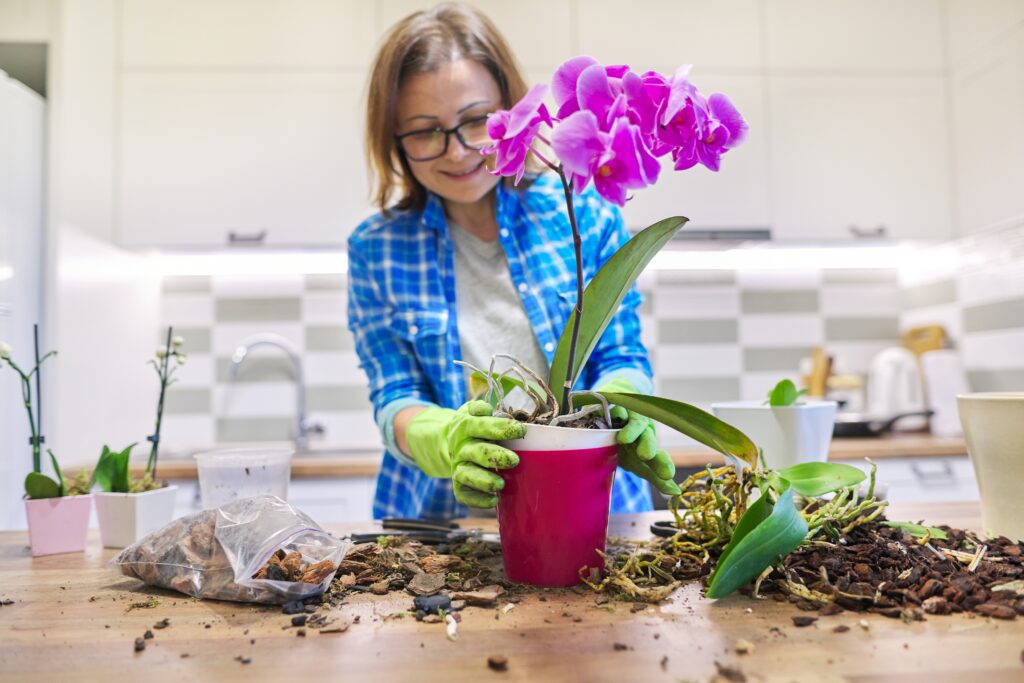
Orchid leaves with white spots are a common problem for orchid growers. The causes of white spots on orchid leaves can vary, but the most common reasons are fungal infections, pest infestations, sunburn and scorch, watering issues, and virus infections.
1. Fungal Infections
Fungal infections are a common cause of white spots on orchid leaves. Fungi such as powdery mildew, Phyllosticta, Pythium ultimum, bacterial brown spot, and black rot can cause white spots on orchid leaves.
These fungi can be spread through contaminated soil, water, or air. To prevent fungal infections, orchids should be kept in a well-ventilated area and the soil should be kept dry.
2. Pest Infestations
Pest infestations, such as mealybugs and ants, can also cause white spots on orchid leaves. Mealybugs are tiny white insects that can be found on the undersides of leaves.
They feed on the sap of the plant and can cause white spots to appear on the leaves. Ants can also cause white spots on orchid leaves by carrying mealybugs or other pests onto the plant. To prevent pest infestations, orchids should be kept clean and free of debris.
3. Sunburn and Scorch
Sunburn and scorch can cause white spots on orchid leaves. Orchids that are exposed to direct sunlight for too long can become sunburned, which can cause the leaves to turn white.
Frostbite or scorch can also cause white spots on orchid leaves. To prevent sunburn and scorch, orchids should be kept in a shaded area and should not be exposed to direct sunlight for too long.
4. Watering Issues
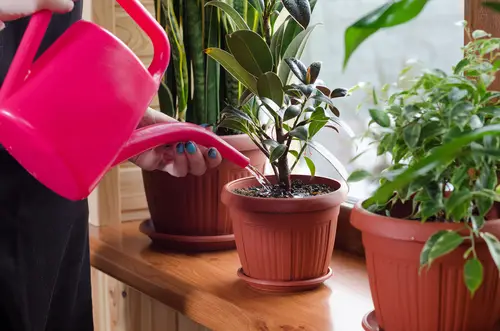
Over-watering or under-watering can cause white spots on orchid leaves. Over-watering can cause the roots to rot and the leaves to turn white.
Over-dried orchids can also cause white spots to appear on the leaves. To prevent watering issues, orchids should be watered on a regular basis and the soil should be allowed to dry out between watering.
5. Virus Infections
Virus infections can cause white spots on orchid leaves. These infections can be caused by a variety of viruses and can be spread through contaminated soil, water, or air. To prevent virus infections, orchids should be kept in a well-ventilated area and the soil should be kept dry.
Identifying Specific Causes
When it comes to identifying the specific cause of white spots on orchid leaves, there are a few possibilities to consider. This section will cover the most common causes of white spots on orchid leaves and how to identify them.
Fungal Spots
Fungal spots are one of the most common causes of white spots on orchid leaves. These spots can vary in size and shape, and they may appear brown or black as well as white. Fungal spots are caused by a variety of fungi, including Phyllosticta and Pythium ultimum.
To identify fungal spots, look for irregularly shaped spots on the leaves that may be sunken or raised. The spots may also have a powdery or fuzzy appearance. Fungal spots can be treated with a fungicide, but it’s important to identify the specific type of fungus causing the problem before selecting a treatment.
Mealybug Infestation
Mealybugs are small, white, fuzzy insects that can infest orchids and cause white spots on the leaves. These insects feed on the sap of the plant and excrete a sticky substance called honeydew, which can lead to the growth of black sooty mold.
To identify a mealybug infestation, look for tiny white spots on the leaves that may be surrounded by a yellow halo. You may also see the insects themselves, which look like small cotton balls.
Mealybugs can be treated with insecticidal soap or rubbing alcohol, but it’s important to treat the entire plant to ensure that all of the insects are eliminated.
Sunburn Marks
Orchids are sensitive to direct sunlight and can develop sunburn marks on their leaves if they are exposed to too much light. Sunburn marks appear as white or yellow spots on the leaves and may be surrounded by a reddish-brown border.
To identify sunburn marks, look for spots on the leaves that are in direct contact with sunlight. Move the plant to a shadier location to prevent further damage.
Virus Lesions
Virus lesions are another possible cause of white spots on orchid leaves. These lesions can vary in size and shape and may be surrounded by a yellow halo.
To identify virus lesions, look for irregularly shaped spots on the leaves that may be sunken or raised. Unfortunately, there is no cure for viral infections in plants, so infected plants should be removed to prevent the spread of the virus to other plants.
Preventing White Spots
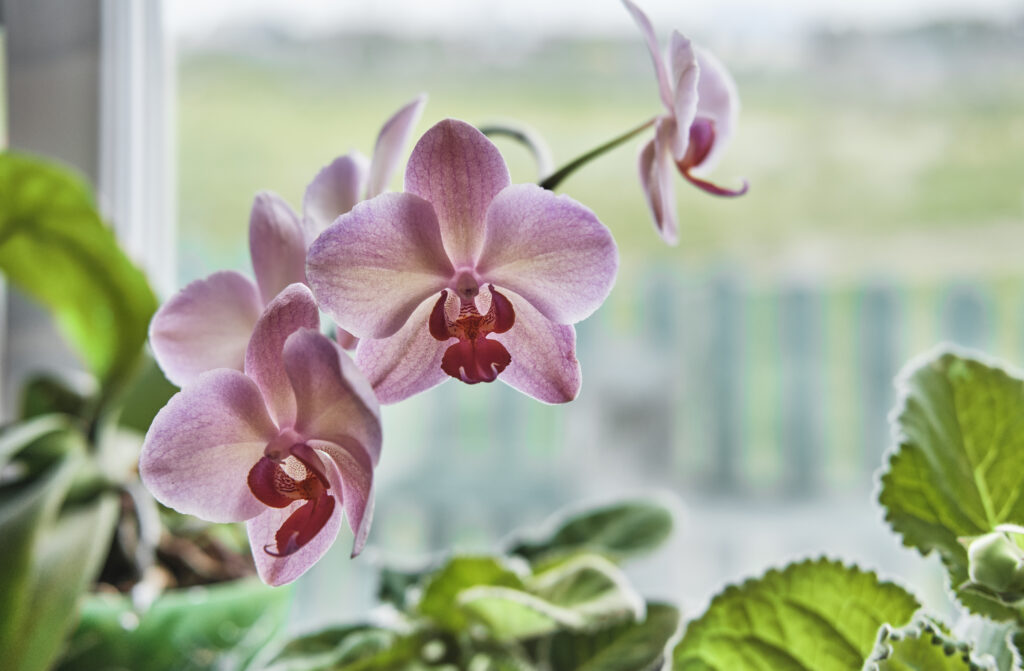
Proper care of orchids can prevent the formation of white spots on their leaves. Here are some tips to prevent white spots on orchid leaves.
1. Proper Watering
Overwatering is a common cause of white spots on orchid leaves. Orchids should be watered only when the potting mix is almost dry. To check if it’s time to water, stick your finger about an inch into the mix.
If it feels dry, it’s time to water. Always water the orchid in the morning so that the leaves have time to dry during the day. Avoid getting water on the leaves as this can cause spotting.
2. Appropriate Lighting
Orchids require bright, indirect light to grow well. Direct sunlight can burn the leaves and cause white spots to form.
If the orchid is not getting enough light, it may not produce enough chlorophyll, which can make the leaves more susceptible to spotting. Place the orchid near a window that receives bright, indirect light for at least six hours a day.
3. Pest Control
Mealybugs are a common pest that can cause white spots on orchid leaves. To prevent mealybugs, inspect the orchid regularly and treat any infestations promptly. Use a cotton swab dipped in rubbing alcohol to remove any visible mealybugs. You can also use insecticidal soap or horticultural oil to prevent mealybugs.
4. Maintaining Humidity
Low humidity levels can cause orchid leaves to become dry and brittle, making them more susceptible to spotting. To maintain humidity, use a humidifier or place a tray of water near the orchid. You can also group orchids together to create a microclimate with higher humidity levels.
Treatment Options for White Spots
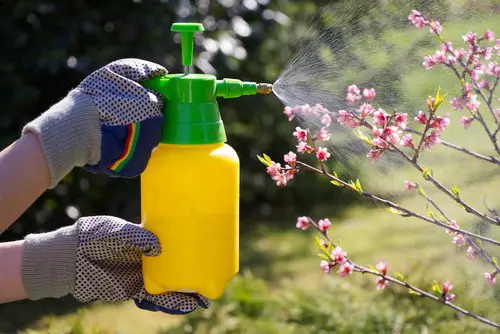
If you notice white spots on your orchid leaves, it is important to take action to prevent further damage. There are several treatment options available, including home remedies, chemical treatments, and environmental adjustments.
Home Remedies
Home remedies can be effective for treating white spots on orchid leaves. One option is to use a mixture of water and dish soap to remove any pests that may be causing the spots. Another option is to use neem oil, which is a natural pesticide that can help to control mealybugs and other pests.
Chemical Treatments
Chemical treatments can also be effective for treating white spots on orchid leaves. One option is to use a fungicide, which can help to control fungal infections that may be causing the spots. Another option is to use an insecticide, which can help to control pests such as mealybugs and spider mites.
It is important to follow the instructions carefully when using chemical treatments, as they can be toxic to humans and pets if not used properly.
Environmental Adjustments
Environmental adjustments can also be effective for treating white spots on orchid leaves. One option is to increase the temperature and humidity levels around the plant, which can help to prevent fungal infections and pests. Another option is to provide diffused light, which can help to prevent sunburn and other damage to the leaves.
Maintaining Healthy Orchids
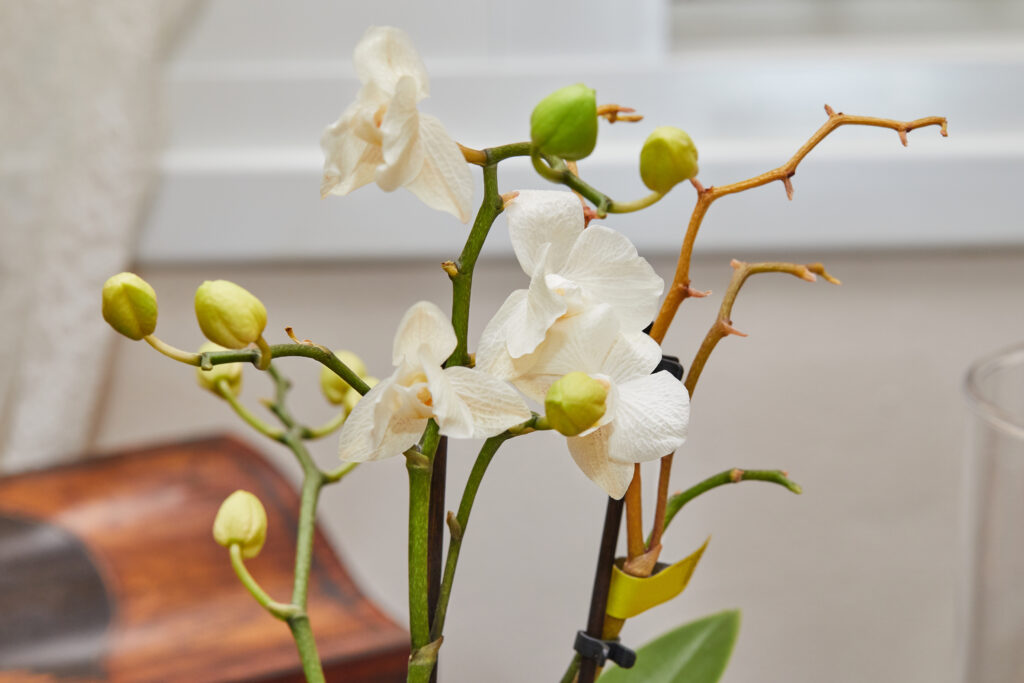
Proper Care
In order to maintain healthy orchids, it is important to provide them with proper care. This includes providing them with the right amount of water, light, and nutrients. Different species of orchids have different care requirements, so it is important to research the specific needs of the orchids in question.
One important aspect of proper care is watering. Overwatering can lead to root rot and other issues, while underwatering can cause the leaves to wilt and turn yellow. It is important to water orchids only when the potting mix is dry to the touch.
Light is also important for orchids. While they need bright, indirect light, too much direct sunlight can burn the leaves. It is important to find a balance between providing enough light and avoiding direct sunlight.
Regular Monitoring
Regular monitoring is another important aspect of maintaining healthy orchids. This includes checking the leaves for any signs of pests or disease, as well as checking the roots for any signs of rot.
Monitoring the leaves can help identify issues such as white spots, which could be caused by improper watering or pests such as mealybugs. If any issues are identified, it is important to take immediate action to address them.
Stress Management
Orchids can become stressed due to a variety of factors, including changes in temperature, humidity, and light. Stress can weaken the orchid and make it more susceptible to pests and disease.
To manage stress, it is important to provide a stable environment for the orchid. This includes maintaining a consistent temperature and humidity level, as well as avoiding sudden changes in light or other environmental factors.
Transport
When transporting orchids, it is important to take steps to minimize stress and prevent damage. This includes packing the orchids carefully and providing them with adequate ventilation and protection from extreme temperatures.
Frequently Asked Questions
How can I remove white spots from my orchid leaves?
To remove white spots from orchid leaves, it is important to first identify the cause of the problem. If the spots are caused by mealybugs, a common orchid pest, they can be removed by wiping the affected areas with a cotton swab dipped in rubbing alcohol.
If the spots are caused by a fungal infection, a fungicide may be necessary to eliminate the problem. It is important to follow the instructions on the fungicide carefully and to treat the orchid in a well-ventilated area.
What is causing large white spots on my orchid leaves?
Large white spots on orchid leaves can be caused by a variety of factors, including fungal infections, bacterial infections, and pest infestations. Overwatering and inadequate humidity can also lead to the development of white spots on orchid leaves. It is important to identify the cause of the problem before attempting to treat it.
What are some common problems with orchid leaves?
Common problems with orchid leaves include yellowing, browning, spotting, and wilting. These problems can be caused by a variety of factors, including overwatering, underwatering, inadequate light, and pest infestations. Proper care and maintenance can help prevent these problems from occurring.
Why are there white spots on my orchid stem?
White spots on an orchid stem can be caused by a fungal infection or a bacterial infection. It is important to identify the cause of the problem before attempting to treat it. A fungicide or bactericide may be necessary to eliminate the problem.
What is the best way to get rid of white fungus on orchids?
The best way to get rid of white fungus on orchids is to apply a fungicide that is specifically designed for orchids. It is important to follow the instructions on the fungicide carefully and to treat the orchid in a well-ventilated area.
In addition, it is important to maintain proper care and maintenance to prevent the fungus from returning.
How do I treat white fuzz on my orchid stem?
White fuzz on an orchid stem can be caused by a fungal infection or a bacterial infection. It is important to identify the cause of the problem before attempting to treat it.
A fungicide or bactericide may be necessary to eliminate the problem. It is important to follow the instructions on the fungicide carefully and to treat the orchid in a well-ventilated area.

Hey, I’m Lisa and I’ve been an avid gardener for over 30 years. I love writing, talking and living in the garden! Feel free to connect with me on my socials below

